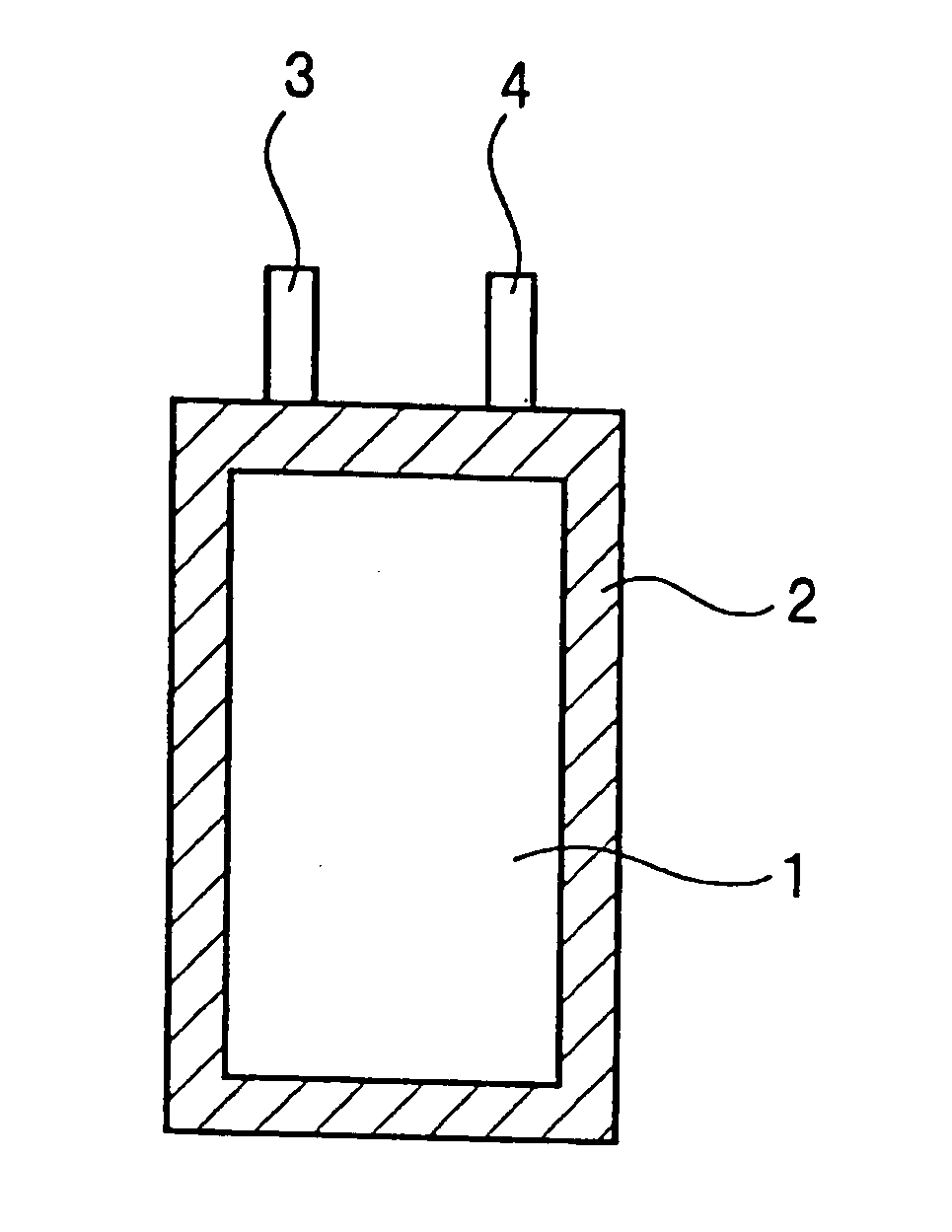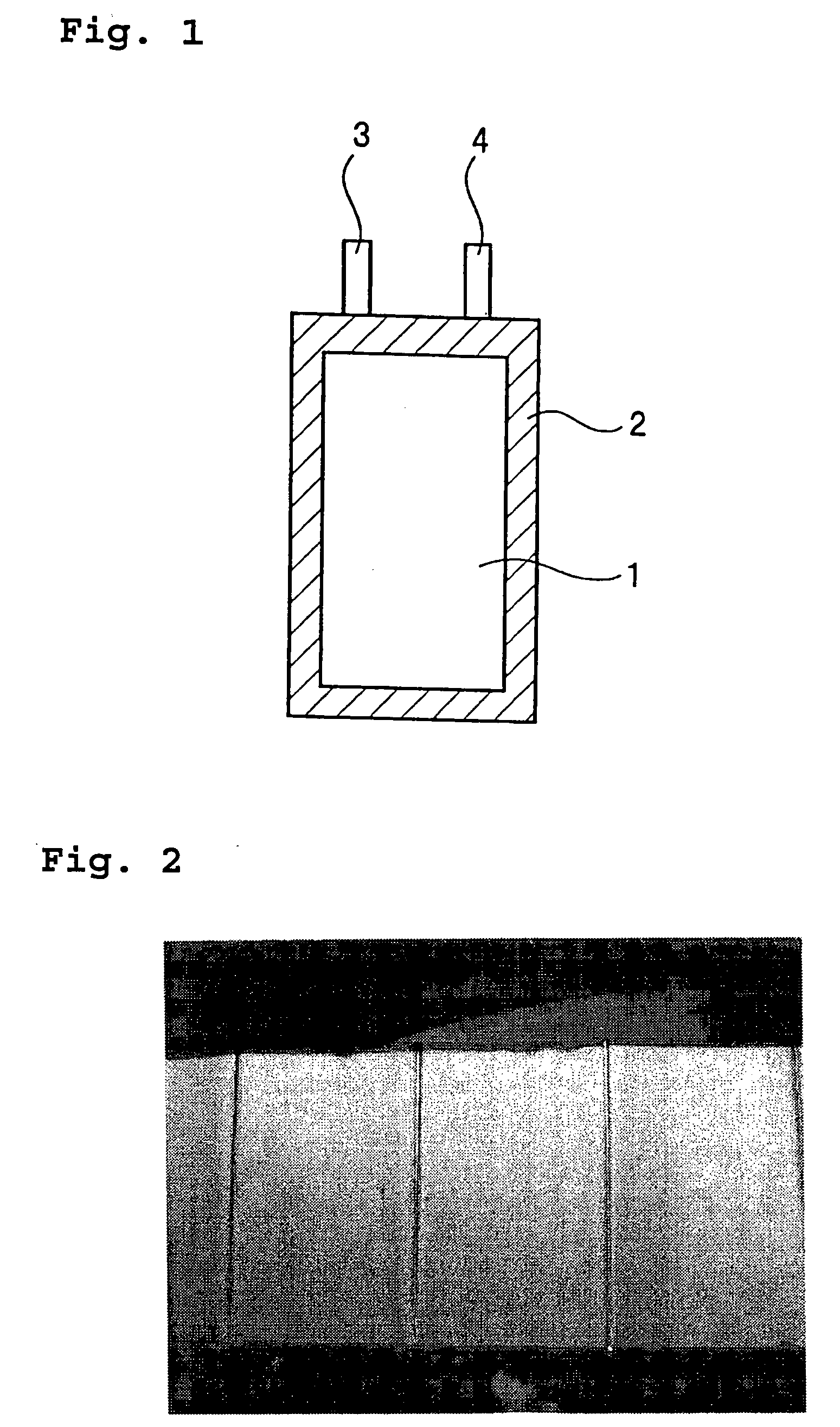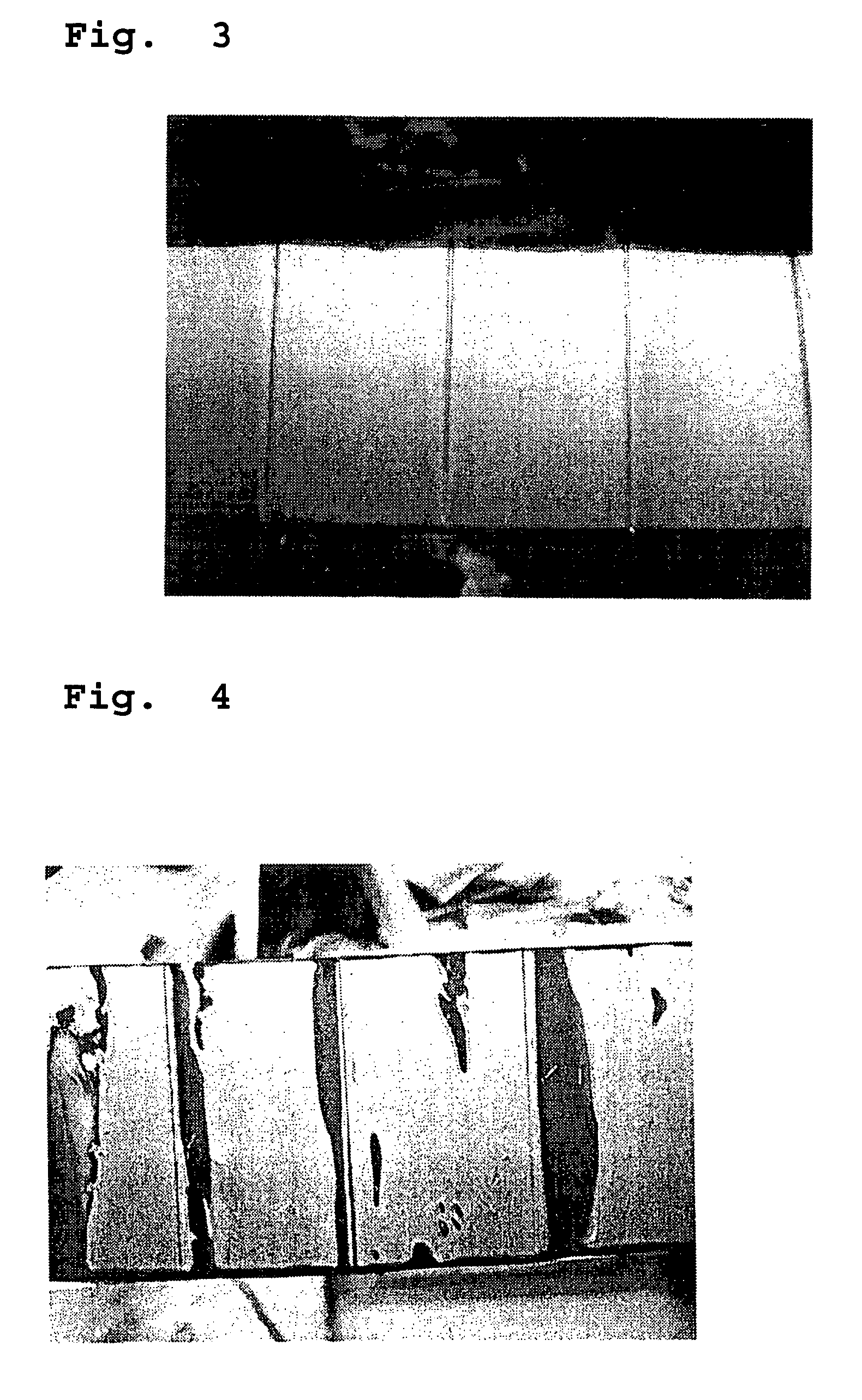Nonaqueous electrolyte secondary battery
- Summary
- Abstract
- Description
- Claims
- Application Information
AI Technical Summary
Benefits of technology
Problems solved by technology
Method used
Image
Examples
experiment 1
[0048] (Experiment 1)
EXAMPLE 1
[0049] [Preparation of Positive Electrode Active Material]
[0050] LiOH, LiF and a coprecipitate hydroxide represented by Mn.sub.0.33Ni.sub.0.33CO.sub.0.34(OH).sub.2 were mixed in an Ishikawa style mortar to provide a molar ratio of lithium to transition metals of 1:1 and to include fluorine in the lithium-transition metal composite oxide in an amount of 500 ppm after heat treatment. The mixture was treated at 1000.degree. C. in an air atmosphere for 20 hours. After the heat treatment, it was ground to obtain a lithium-transition metal composite oxide represented by LiMn.sub.0.33Ni.sub.0.33Co.sub.0.34O.sub.2 including fluorine and having a mean particle diameter of about 5 .mu.m. The BET specific surface area of the obtained lithium-transition metal composite oxide was 0.94 m.sup.2 / g.
[0051] [Determination of Quantity of Fluorine]
[0052] 10 mg of the lithium-transition metal composite oxide was measured and was mixed with 100 ml of a 20 weight % hydrochlori...
example 2
[0062] A lithium secondary battery A2 was prepared in the same manner as the battery in Example 1 except that LiOH, LiF and a coprecipitate hydroxide represented by Mn.sub.0.33Ni.sub.0.33Co.sub.0.34(OH).sub.2 were mixed to provide a molar ratio of lithium and transition metals of 1:1 and to include an amount of fluorine in the lithium-transition metal composite oxide after heat treatment of about 1300 ppm. The amount of fluorine in the obtained LiMn.sub.0.33Ni.sub.0.33Co.sub.0.34O.sub.2 was measured as the same manner as above and was 1200 ppm. The BET specific surface area was 0.72 m.sup.2 / g. The thickness of the battery A2 was initially 3.69 mm.
example 3
[0063] A lithium secondary battery A3 was prepared in the same manner as the battery in Example 1 except that LiOH, LiF and a coprecipitate hydroxide represented by Mn.sub.0.33Ni.sub.0.33Co.sub.0.34(OH).sub.2 were mixed to provide a molar ratio of lithium and transition metals of 1:1 and to include an amount of fluorine in the lithium-transition metal composite oxide after heat treatment of about 8000 ppm. The amount of fluorine in the obtained LiMn.sub.0.33Ni.sub.0.33Co.sub.0.34O.sub.2 was measured in the same manner as above and was 7900 ppm. A BET specific surface area was 0.33 m.sup.2 / g. The thickness of the battery A3 was initially 3.69 mm.
PUM
 Login to View More
Login to View More Abstract
Description
Claims
Application Information
 Login to View More
Login to View More - R&D
- Intellectual Property
- Life Sciences
- Materials
- Tech Scout
- Unparalleled Data Quality
- Higher Quality Content
- 60% Fewer Hallucinations
Browse by: Latest US Patents, China's latest patents, Technical Efficacy Thesaurus, Application Domain, Technology Topic, Popular Technical Reports.
© 2025 PatSnap. All rights reserved.Legal|Privacy policy|Modern Slavery Act Transparency Statement|Sitemap|About US| Contact US: help@patsnap.com



